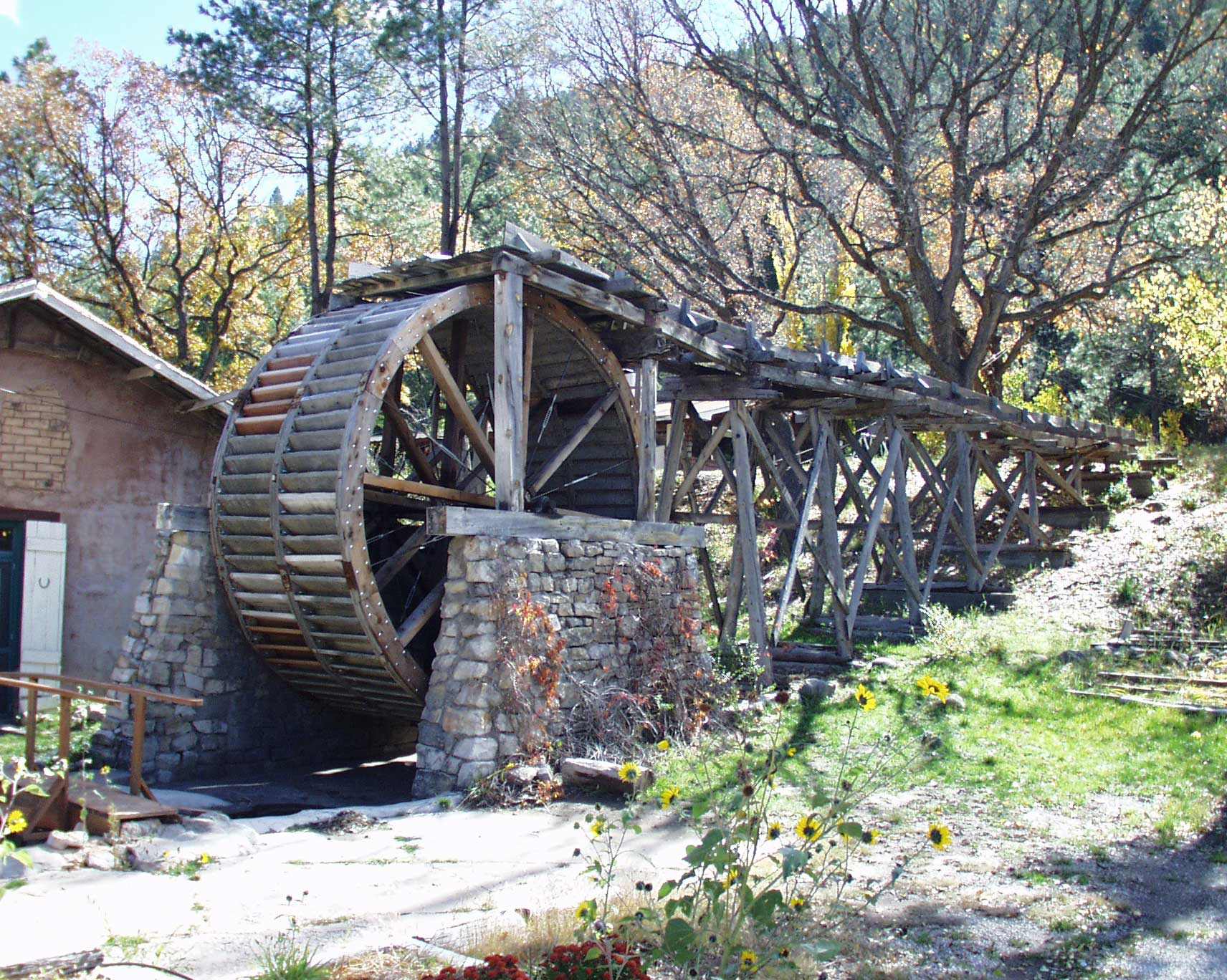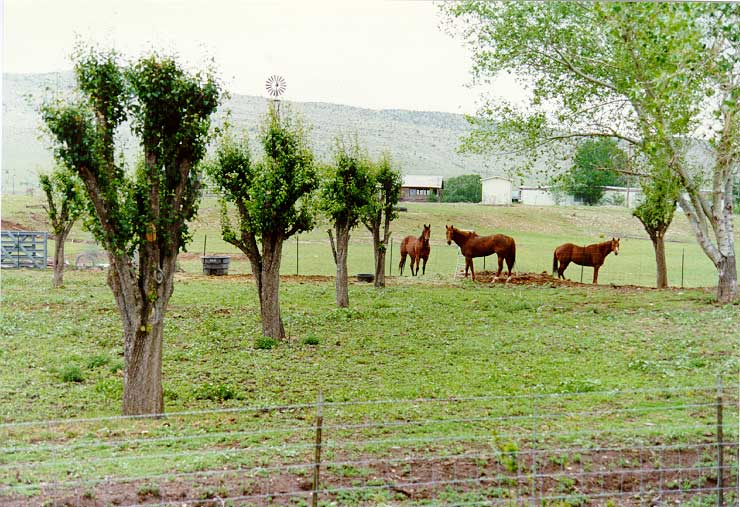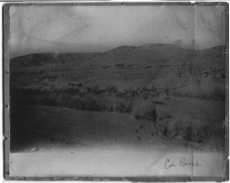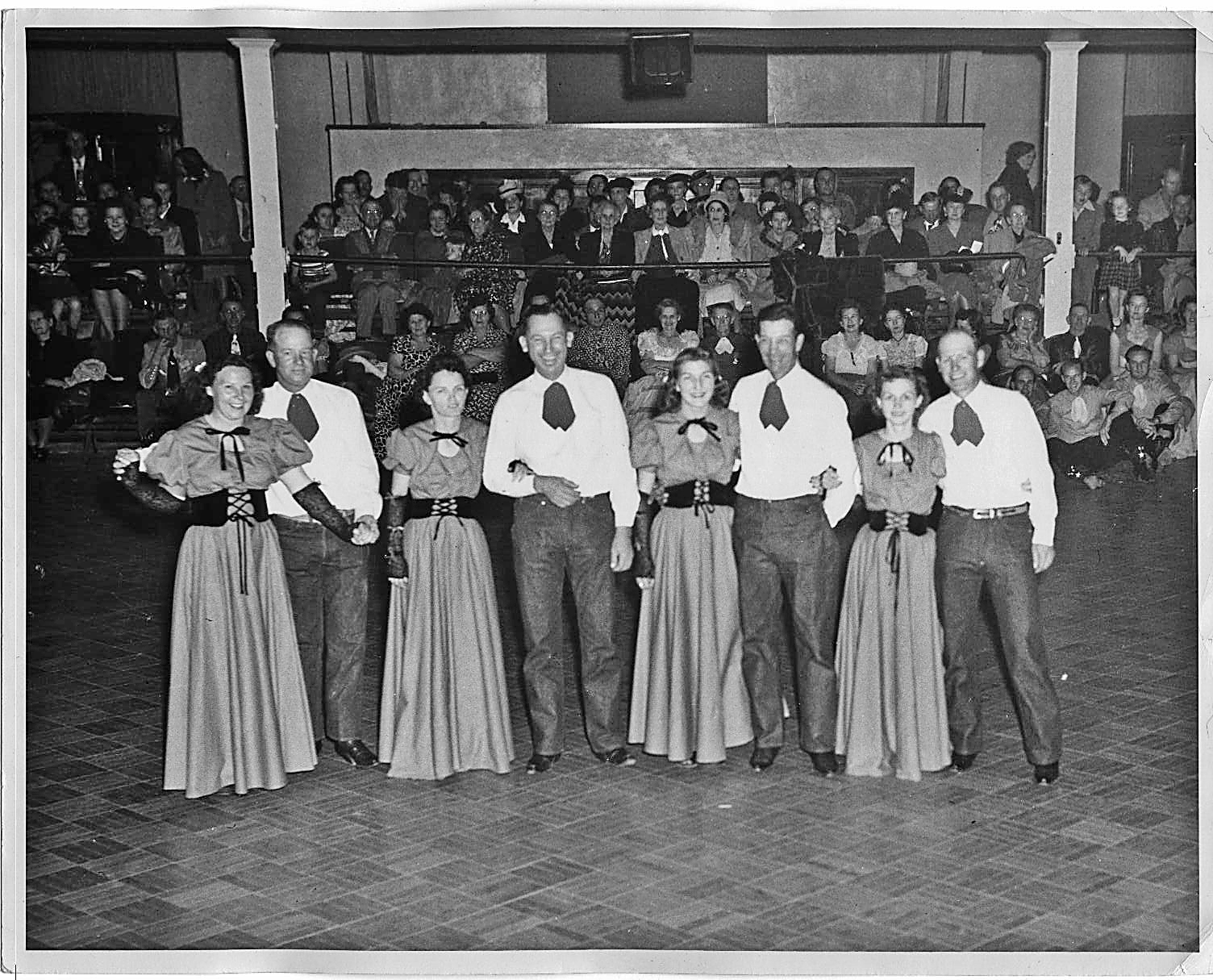








Making a Living (Bonnell 1)
RW: Mr. Bonnell, What did your family do to make a living in the valley?
LB: They worked farm and ranch work and highway. He worked all three places. When my older brother got old enough to do most of the farming, he stayed on the farm. And the rest of us stayed in school.
RW: Did your family own the farm?
LB: Yes, sir.
RW: When did they homestead it?
LB: Well, they bought it in 1915, and the pasture land was homesteaded, and that’s the last homestead I know about in that area.
RW: Do you recall when it was officially patented?
LB: Yeah, it was patented . . .
NB: When?
LB: We had three sections of pasture land and 25 acres farmed under the ditch. And, besides, Daddy worked highway all the time.
RW: What kinds of crops did you and your family produce?
LB: Well, we had alfalfa, and we had corn, and we had cabbage, and we had all kinds of garden stuff. Everything. And we had fruit trees.
RW: Where did you market the produce?
LB: Well, we took it to Capitan, we took it to Roswell, or sometimes a truck could work his way in there, we’d load the truck out. Didn’t have many trucks then.
RW: Did you have a fruit stand?
LB: No. Lot of them there, but we didn’t have one.
RW: How many animals were on your ranch?
LB: Oh, yeah, we ran 50 head of cows and five mules and about 10 horses. A few sheep and chickens. Three or four hogs. We butchered our own meat all the time.
RW: Did you market your stock?
LB: No, we did an annual sale and shipped them to Kansas City. Had a shipping yard in Capitan, see. We just rounded up the whole valley, everybody that wanted to sell, and four or five of us would take them together down and ship them on the railroad.
Growing up and Making a Living (Bonnell 2)
RW: When you were talking about what you did on the farm to help out, could you expand that at all, when you were growing up?
LB: Well, I done everything on the ranch and then the farming that there was there to do, and just branding or shipping or taking care of the calves when they come, and breaking horses, and working all the time on something.
RW: Did you have a daily routine?
LB: I worked every day but four hours on Sunday. We got four hours off after church.
RW: When would your day start?
LB: About 5:00.
RW: 5:00 in the morning? Up and at ‘em.
LB: Yeah. Worked ‘til dark and sometimes after dark. We didn’t have lights like they got down there now. There wasn’t no electricity in the valley. No, I done everything around the farm that there was to do, and on three different farms.
RW: Was the farm family-operated, or did you hire laborers.
LB: We did hire out laborers to pick apples or to mow hay or spray trees and all that kind of farm work. The pay wasn’t very good. Nobody had any money.
RW: How were your fields irrigated? Did you have an acequia or ditch?
LB: We had irrigation ditches come from the river, and watered the fields that way. We all had ditches. Each place had five days a month.
RW: Five days a month?
LB: Yeah, ours run 26th through the 31st. We watered then, and the rest some of the rest of them had the water.
Transportation (Bonnell 3)
RW: Did any of the changes in the alignment of US 70 affect your farming operations and your ranching operations over the years?
LB: Well, yeah, we changed and went from horses to tractors, went to better equipment, better machinery, and then it wasn’t machinery that was doing it, but horses and mules. Now the horses is all gone, and the machinery is still there.
RW: Did the highway affect your operations?
LB: Oh, yeah, well, not that much. It took part of our land that we didn’t want them on. And, like, the last time they took half of this house here. This one right here. They took six foot off of that. And that ruined the windmill and ruined that ranch there. And they raised it up so you was down in a hole, where that erosion would fill up in that hole. Dangerous to live there.
RW: Flooding and such?
LB: Yeah, since I left there I’ve seen water four foot deep in that house.
RW: And when did you leave the valley?
LB: I left there in ’36.
Arrival in the Hondo Valley (Bonnell 4)
RW: Now we’re going to talk about the community itself, of Glencoe. For descendents of the early settlers of the valley, when did your family first come to the area?
LB: My mother [Agnes] was born right there in that picture on the wall you seen in there. She was born there. When she got married she moved a mile down the road. So she was raised there, and this woman’s her first sister [referring to Sidney Coe Bonnell]. And they own the Bonnell Ranch. They never left it. They just went from one ranch to the next one.
RW: And what’s her name?
LB: Sidney Coe Bonnell. That’s the oldest girl of Frank Coe’s. She never left it either. My mother moved the other way a mile. They were two and a half miles apart all their life.
RW: What brought the Bonnells to the valley?
LB: Well, my grandfather had a coal mine in White Oaks, and that’s where they got into the valley. They come from Leonard, Kansas. When they went to White Oaks and was working with him, some way another they met these two women. They were 30 miles apart, and they was riding horses. My dad was a bronc buster, too. He broke horses for people. Done everything. But the big change was made in the valley when the race track come in, in 1952. That’s when it seemed like everybody run up there to go to work and they quit farming. They don’t do much farming anymore. I never see no corn trucks or anything there anymore. It’s all in junk. But they brought enough jobs – that racetrack brought enough jobs into Ruidoso to keep all their families going down there. They don’t have to farm. Lot of them still got cows.
Birthplace (Bonnell 5)
RW: You grew up in the Hondo Valley, but where would you say you were from? A city or community or . . .
LB: Glencoe.
Making a Living and Social Events (Bonnell 6)
NB: They used to have a dude ranch there at the Coe’s. Did you know that?
RW: Did you have anything to do with the dude ranch that was operated over there?
LB: I worked there. I done milking the cows and saddling the horses that the dudes was going to ride. Kept a record of them all the time, what horses available, what’s not available, and record them out as long as we had them, and if we didn’t have enough we’d go to the ranches below or above and borrow a couple more.
NB: And he worked in the kitchen, also.
LB: Sometimes we’d have 30 horses going.
RW: Did you work in the kitchen as well?
LB: Not much. I washed dishes a few times, but I didn’t. My brother done the pie-making and the cake-making, and . . .
NB: All his sisters were waitresses.
LB: He was a pastry cook.
RW: Many people have said great things about the Bonnell dance hall.
LB: Yeah, we had the same cafeteria with five big tables. We just moved the tables in the yard. And we’d have a dance – a square dance or ballroom dance - country western. And Coes furnished the music. That right there – one of the best musicians you’ll ever find.
RW: And this is?
LB: Coe. Wilbur Coe.
NB: Louise’s husband.
RW: The dances seem to be a central gathering point for a lot of the families in Glencoe.
LB: Well, yeah, we had up there at the Bonnell Ranch in summer we had a ball game going all the time. We had a little rodeo every Sunday. And we had cookouts down on the river, and marshmallow fries out in the mountains – stuff for the guests to do all the time. We had our own bucking stock and roping stock and have a little rodeo on Sunday, and maybe play ball once or twice a week. Had a ball team.
RW: Did you get to participate in the rodeos?
LB: I took part in them.
RW: What did you do?
LB: I rode the bulls and rode the bareback horses and roped the calves. And played second base on the ball team.
RW: The baseball team, was that centered around the school? Or was it just the community?
LB: No just people from the community, and started having my Hondo High School boys, all right. I lived around that area.
RW: Did you play against other teams?
LB: Yeah, we played against Fort Stanton, Capitan, we’d go down and play with Roswell. They’d come up there. And Cloudcroft would come down. We had different towns playing.
School (Bonnell 7)
RW: Switching topics again to schools – going to school and growing up in the valley – what was a typical school day like in Glencoe?
LB: Just four classes and a couple of recesses and had writing and English and spelling and arithmetic. Geography.
NB: You know how he got to school? I think he went by horseback to school.
RW: How did you get to school everyday?
LB: I went to school either rode a horse or on foot. For a long time I had a buggy with a horse. Took four of us. But when the horse died, there was just two of us left and we rode a horse.
RW: How early did you have to start out to go to school in the morning?
LB: Well, I didn’t have to start over ‘til 20 minutes to eight. To go two miles in 20 minutes.
RW: How many teachers did your school have?
LB: Two.
RW: How did they split up their duties? What did . . .
LB: Well, they had different classes, one at a time. And when one’s doing bookwork or something, and she’d take it over and do the teaching.
RW: And how many children attended school, in grammar school?
LB: I’d say there was 35.
RW: And where did you go to high school?
LB: Hondo. We had six teachers up there. And 156 kids.
RW: What kinds of extracurricular activities did you do in school? You know, non-arithmetic and math. What kinds of sports and such.
LB: Football, baseball and track. And basketball.
Church (Bonnell 8)
RW: How many people attended your community church? And what was that church?
LB: Well, when it was built there was about 30, but I don’t think there’s about six now.
RW: When was it built?
LB: 1930.
NB: St. Anne’s church?
LB: St. Anne’s
NB: They’ve got more than six members now.
LB: I don’t know how many attends regularly, but . . .
RW: What kinds of programs were held at the church?
LB: Oh, I don’t remember them doing anything after church, but, I don’t know they had any programs going. Of course at Christmas time they had some singing, some programs going then, but . . .
RW: How often were the services held?
LB: Just on Sunday.
RW: They were weekly though.
LB: Yes
RW: And did they have a resident priest, or did a priest have to come . . .
LB: Yes, they had one.
Social Events (Bonnell 9)
RW: Are there any specific episodes that happened in the dances that you’d like to talk about or to share?
LB: Well, I liked it there because they had a ballgame going and we had a rodeo going, we had work going, and we had time for recreation, and there was always something going. And we might have to walk to go up and get one of the Perry girls and walk her down there to the dance. But there was always activity.
RW: Could you describe what a typical dance was like.
LB: Well there was <unclear> one-step and the two-step, the jigs. I don’t know how Coe could play it all. Besides he played Mexican music.
RW: So what was it like in the dance hall?
LB: Well just like a family meeting. There’s family together and have a little fun.
RW: How many people would be there at the dance?
LB: Maybe 30 couples. And the guests were according to how many guests we had. They’d all be up there. We had 20 cabins rented out all the time.
Making a Living (Bonnell 10)
RW: What are some of your fondest memories of being on the ranch?
LB: I guess the memories of breaking horses and repairing harness and working in the blacksmith shop, getting everything ready for harvest. No, besides going home and getting another kid, I don’t know what else we had. We had eight of them.












